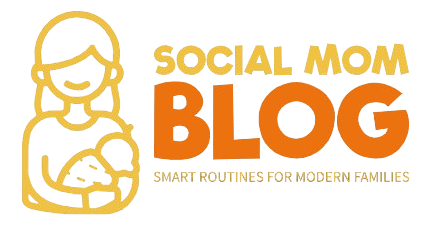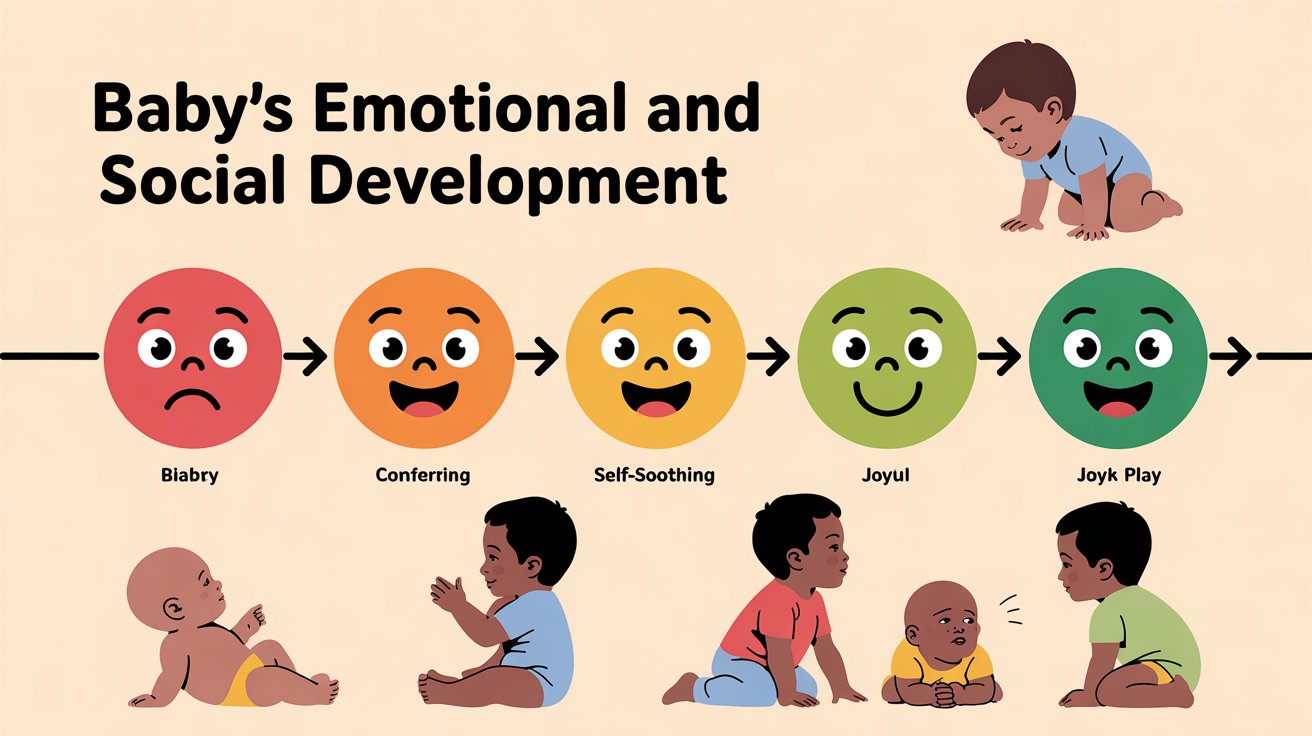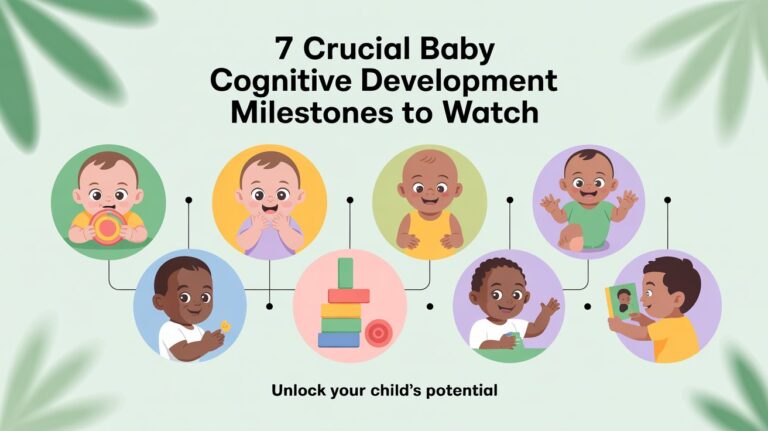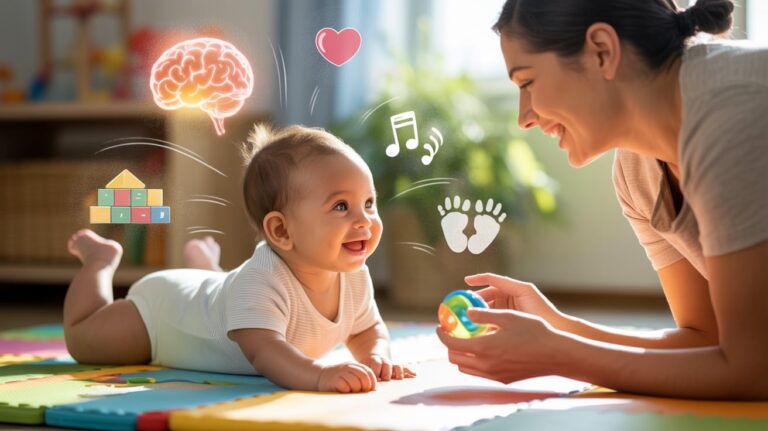What is Emotional and Social Development: A Parent’s Guide
Your baby is feeling more than you realize, from the very first cry, they’re building the foundation of trust, bonding, and relationships. Infant emotional development refers to how babies experience, express, and begin to regulate their feelings, while baby social development milestones describe how they connect with parents, caregivers, and eventually peers.
our baby’s emotional and social development is just one part of their overall growth. To see how this fits into the bigger picture, check out our guide on Holistic Infant Development Explained: What Every Parent Should Know
These two areas grow side by side, shaping your child’s sense of security, empathy, and confidence. In this guide, we’ll explore Emotional and Social Development milestones by age, key theories, ways parents can support growth, the best toys and activities, and red flags every caregiver should know. If
What Is Infant Emotional and Social Development?
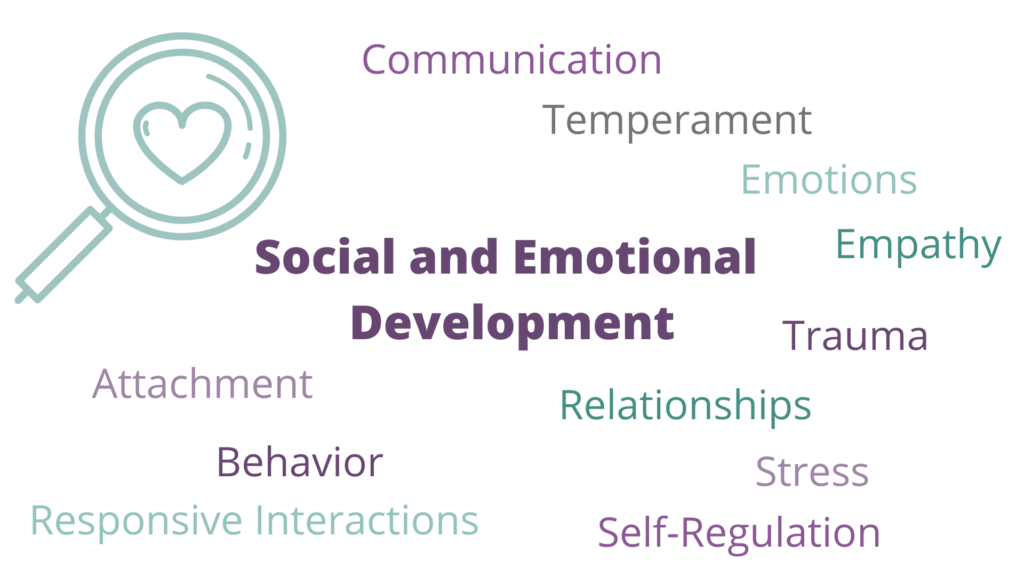
Infant emotional and social development is a core part of your baby’s overall growth. Emotional development is about how infants experience feelings, show those feelings, and slowly learn how to regulate them. This includes moments like smiling when happy, crying when upset, or calming down when comforted.
Social development is about how babies start building connections and learning to interact with others. From bonding with parents to recognizing familiar faces and later showing empathy, social growth helps babies feel safe and connected.
Both “social and emotional development” develop in parallel, shaping self-awareness, emotional regulation, empathy, and strong relationships.
When Does Social-Emotional Development Begin?
This development kicks off right from the start. You might think a newborn is just a tiny human who eats and sleeps, but they’re already learning how to connect with the world. When a baby cries and you respond, you’re not just feeding them or changing their diaper, you’re teaching them that they can trust you.
This is the very beginning of bonding and building a secure relationship. From birth, bonding begins through crying, cooing, and eye contact. For practical tips on supporting your newborn’s earliest needs, see our guide on Newborn Baby Care Fundamentals.
The first big moments you’ll probably notice are the early milestones. Around 6 weeks old, you might get a social smile from your baby. This isn’t just a reflex; it’s a real smile they give you in response to your face or voice.
A few months later, usually around 3 to 4 months, you’ll hear their first real laugh. These are signs that temperament in babies developing and they’re starting to understand that their actions can get a reaction from you, which is a huge step in their journey.
Emotional & Social Milestones by Age – Complete Chart
Every baby grows at their own pace, but there are common baby social development milestones and emotional milestones you can look for. These early signs help parents understand what stage their child is in and what to expect next. For your ease, we have listed the complete data below in a simple chart:
Social-Emotional Development Stages by Age
Track your child’s development through their early years
The first five years are a time of rapid growth in how children understand feelings and relationships. From birth, babies communicate mainly through crying and facial expressions, calming with a parent’s touch. By two months, smiles appear, and by three months, they enjoy cuddles and familiar voices. At six months, they recognize faces, respond to emotions, and love games like peek-a-boo.
By toddlerhood, emotions become stronger and social play expands. To understand this next stage in more depth, explore Toddler Behavior and Emotional Growth.
Select an Age Group to View Milestones
Newborn Developmental Milestones
Moving (Physical)
- Lifts head briefly during tummy time
- Turns head side to side
- Brings hands to mouth for comfort
- Keeps hands mostly closed
- Blinks at bright lights
Talking (Communication)
- Communicates mainly by crying
- Roots or smacks lips when hungry
- Yawns or arches back when overstimulated
Interacting (Social & Emotional)
- Expresses feelings through crying or smiling
- Uses face and body to communicate
- Calms when touched or held
- Enjoys watching your face
Thinking (Cognitive)
- Sees objects 8–12 inches away
- Reacts to surrounding sounds
- Startles at loud noises with body movements
2-Month Developmental Milestones
Moving (Physical)
- Lifts head and pushes up on arms during tummy time
- Moves arms and legs more smoothly and evenly
- Brings hands to mouth
Talking (Communication)
- Makes cooing sounds
- Cries to signal needs
- Turns head toward voices or sounds
Interacting (Social & Emotional)
- Smiles socially for the first time
- Expresses feelings through crying or smiling
- Watches faces and follows with eyes
Thinking (Cognitive)
- Tracks moving toys or rattles with eyes
- Recognizes familiar people from a distance
- Startles at loud noises and fusses when bored
3-Month Developmental Milestones
Moving (Physical)
- Lifts head and chest during tummy time
- Moves arms and legs with energy
- Holds head with better control
Talking (Communication)
- Makes cooing and gurgling sounds
- Chuckles in response to interaction
- Cries when hungry or uncomfortable
Interacting (Social & Emotional)
- Calms when hearing a familiar voice or feeling touch
- Smiles at people
- Enjoys cuddling and hugs
Thinking (Cognitive)
- Recognizes breast or bottle
- Turns head to follow movement
- Reacts to loud sounds
4-Month Developmental Milestones
Moving (Physical)
- Holds head steady without support
- Pushes up on elbows during tummy time
- Pushes legs down when feet touch a firm surface
- Grabs, shakes, and brings toys to mouth
- Rocks side to side; may roll from tummy to back
Talking (Communication)
- Babbles and imitates sounds
- Laughs out loud
- Uses different cries for hunger, pain, or tiredness
Interacting (Social & Emotional)
- Smiles freely at people
- Shows excitement by moving arms and legs
- Usually calms when comforted
- Enjoys playing and copying facial expressions
Thinking (Cognitive)
- Tracks moving objects with eyes
- Expresses happiness or sadness
- Watches faces closely, especially while feeding
- Reaches for and mouths toys
6-Month Developmental Milestones
Moving (Motor Skills)
- Rolls both ways
- Sits with support
- Bears weight on legs, may bounce
- Rocks on hands and knees, sometimes backward first
Talking (Communication)
- Babbles sounds like “ba,” “da,” “ma”
- Starts to understand “no”
- Copies simple gestures
- Points to objects
Interacting (Social & Emotional)
- Recognizes familiar vs. strangers
- Enjoys games like peek-a-boo
- Smiles at reflection
- Reacts to emotions, shows happiness or fussiness
Thinking (Cognitive)
- Explores with hands and mouth
- Passes objects between hands
- Watches surroundings with curiosity
9-Month Developmental Milestones
Moving (Motor Skills)
- Sits steadily without support
- Crawls or creeps
- Pulls up to stand and holds on
- Cruises along furniture
Talking (Communication)
- Babbles with sounds like “ba,” “da,” “ma”
- Understands “no”
- Copies simple gestures
- Points to communicate
Interacting (Social & Emotional)
- Smiles, cries, or points to show feelings
- Has favorite toys
- Clings to caregivers, shows stranger anxiety
- Responds to own name
Thinking (Cognitive)
- Tracks falling objects
- Searches for hidden items
- Transfers objects between hands
- Plays peek-a-boo
- Picks up small pieces with thumb and finger
- Turns book pages and mouths objects
12-Month Developmental Milestones (1-Year-Old)
Moving (Motor Skills)
- Pulls up to stand and cruises along furniture
- Gets into sitting without help
- Stands briefly without support
- May take first independent steps
Talking (Communication)
- Uses simple gestures (waves “bye,” shakes head “no”)
- Says “mama,” “dada,” and tries other words
- Responds to simple requests
Interacting (Social & Emotional)
- Has favorite people and toys
- Copies sounds, gestures, and actions for attention
- Shows separation anxiety and shyness with strangers
- Helps with dressing (lifts arm or leg)
- Plays simple games like peek-a-boo or pat-a-cake
- Shows affection to familiar people
Thinking (Cognitive)
- Puts objects in and out of containers
- Looks at pictures when named
- Bangs or shakes toys, pokes with finger
- Uses objects correctly (drinks from cup, brushes hair)
- Follows simple directions
- Releases objects without help
18-Month Toddler Developmental Milestones
Moving (Motor Skills)
- Walks alone, begins to run, climbs steps
- Pulls toys while walking backward
- Eats with a spoon, drinks from a cup
- Helps with dressing and undressing
Talking (Communication)
- Says at least 3–10 single words
- Tries short phrases (“all done”)
- Points to show wants
- Says “no” and shakes head
Interacting (Social & Emotional)
- Shows interest in other children
- Plays simple pretend (feeds a doll, etc.)
- Imitates adult actions
- Tries new activities with a trusted adult nearby
- Shares or hands toys during play
- Expresses strong feelings (tantrums, affection, fear of strangers, clings to parent)
Thinking (Cognitive)
- Scribbles with crayons
- Points to body parts
- Follows simple one-step instructions
- Understands everyday objects (phone, brush, spoon)
- Enjoys pretend play with dolls or animals
- Loves books, songs, and stories; turns pages
2-Year Toddler Developmental Milestones
Moving (Motor Skills)
- Kicks and throws a ball
- Walks up and down stairs with support
- Runs, climbs on furniture, stands on tiptoes
- Builds a tower of 4+ blocks
- Starts simple puzzles
Talking (Communication)
- Uses 2–3 word phrases
- Points to pictures in books when named
- Follows simple directions
- Knows names of familiar people and body parts
Interacting (Social & Emotional)
- Plays alongside other children, sometimes chasing or joining in
- Imitates adults and older kids
- Shows growing independence and occasional defiance
- Enjoys being around other children
Thinking (Cognitive)
- Finds hidden objects under layers
- Experiments to see how things work
- Sorts shapes and colors
- Follows two-step instructions
- Names objects in books
- Completes rhymes or sentences in familiar stories
- Begins pretend play and simple make-believe games
3-Year Child Developmental Milestones
Moving (Motor Skills)
- Runs and climbs with ease
- Walks stairs using one foot per step
- Jumps with both feet, may hop on one
- Pedals a tricycle
Talking (Communication)
- Speaks in 3-word sentences, holds conversations
- Usually understood by strangers
- Follows 2–3 step directions
- Uses “I,” “me,” “you,” “we” and some plurals
- Understands words like “in,” “on,” “under”
- States name, age, gender
- Asks “why,” “where,” “what,” “when,” “how”
- Can name a friend
Interacting (Social & Emotional)
- Shows concern and affection for others
- Copies friends and adults in play
- Takes turns in games
- Separates from parents more easily
- Expresses many emotions
- Enjoys routines, dislikes major changes
- Helps with small household tasks
- Dresses self, may be toilet trained during the day
Thinking (Cognitive)
- Completes 3–4 piece puzzles
- Draws or copies a circle
- Engages in pretend play with people or toys
- Creates imaginative stories
- Sorts and matches by color or shape
- Operates toys with buttons, levers, or moving parts
- Understands the concept of “two”
- Names colors, turns book pages one at a time
- Opens jars, turns door handles
4-Year Child Developmental Milestones
Moving (Motor Skills)
- Catches a bounced ball most of the time
- Hops or balances on one foot for a few seconds
- Pours drinks, mashes food, and cuts with supervision
Talking (Communication)
- Tells stories and remembers parts of them
- Uses grammar more accurately and speaks clearly
- Recites songs or rhymes from memory
- Says first and last name
- Speaks in complete sentences
Interacting (Social & Emotional)
- Plays cooperatively with peers
- Negotiates and solves simple conflicts
- Prefers group play over playing alone
- Enjoys trying new things and new experiences
- Shows creativity in pretend play, though may confuse real and make-believe
- Expresses likes, dislikes, and interests
Thinking (Cognitive)
- Copies basic shapes
- Understands “same” vs. “different”
- Follows 2–3 step directions
- Begins to grasp counting and numbers
- Draws a person with 2–4 body parts
- Understands simple time concepts
- Names colors
- Uses scissors and copies letters
- Enjoys board and card games
- Predicts what might happen next in a story
5-Year Child Developmental Milestones
Moving (Motor Skills)
- Hops, may skip, and does somersaults
- Uses fork, spoon, and sometimes a table knife
- Balances on one foot for 10+ seconds
- Swings, climbs, and uses the toilet alone
Talking (Communication)
- Speaks clearly in 5+ word sentences
- Tells stories in full sentences
- Uses future tense (“I will…”)
- Says full name and address
Interacting (Social & Emotional)
- Wants to be like and please friends
- Accepts rules more easily
- Enjoys singing, dancing, and acting
- Understands fantasy vs. reality
- Identifies gender
- Expresses likes, dislikes, and independence
- Seeks new experiences; may be both demanding and cooperative
Thinking (Cognitive)
- Counts 10+ objects
- Correctly names 4+ colors
- Understands everyday items (food, money)
- Draws a person with 6+ body parts
- Copies triangles and other shapes
- Understands time concepts
- Prints some letters and numbers
- Recognizes and may write own name
What is Attachment Theory and Why It Matters?
Attachment theory in infancy is one of the most important foundations for understanding a baby’s emotional and social development. It explains how infants form bonds with their caregivers and how these early relationships shape trust, emotional security, and future social skills.
Healthy attachment builds a secure base, allowing babies to explore the world while knowing they can return to their caregiver for safety and comfort. Poor or inconsistent attachment, on the other hand, may lead to difficulties with trust, self-regulation, and relationships later in life.
Why Attachment Theories Matters for Parents?
For parents and caregivers, understanding attachment theory highlights the importance of consistent, warm, and responsive care. Secure attachment not only supports emotional regulation in infancy but also builds empathy, self-awareness, and relationship skills that last into adulthood. Strong early bonds truly are the building blocks of lifelong well-being.
How Babies Express and Regulate Emotions?
Understanding how babies show and manage feelings is a big part of emotional and social development. From the very beginning, infants communicate emotions before they can use words.
Crying is a newborn’s first form of communication. Babies cry to signal hunger, discomfort, or the need for comfort. Over time, parents learn to recognize different cries, which helps them respond with care and build trust. By around 6 weeks, babies develop social smiles, and by 3 to 4 months they begin to laugh. These joyful expressions show that babies are learning how to connect emotionally. By contrast, frowning or fussing reflects early frustration or discomfort.
In the first year, babies rely mostly on co-regulation, meaning they need caregivers to calm and comfort them. Over time, this shifts toward self-regulation, where toddlers begin soothing themselves through actions like sucking their thumb or holding a favorite toy.
Around 18 to 24 months, babies reach a milestone in self-awareness, often shown by recognizing themselves in a mirror. At this stage, early empathy begins to appear. A toddler may try to comfort another child who is upset or share toys, showing the first signs of prosocial behavior. These gradual steps in emotional regulation, self-awareness, and empathy are essential for learning how to cope with feelings and build healthy social bonds.
How Babies Learn Social Cues?
One of the most fascinating parts of your baby’s growth is how they begin to pick up on the unspoken signals people use every day. Parents often ask how babies learn social cues, and the answer lies in the small, repeated interactions that happen during everyday life.
By the end of the first year, infants start showing joint attention. This happens when a baby follows a parent’s gaze or finger-pointing to focus on the same object. It teaches them that attention can be shared, which is an important skill for communication and relationships.
Another key process is social referencing. Babies look to their caregivers for guidance on how to react in new situations. For example, if a baby hears a loud noise, they may glance at their parent’s face. If the parent looks calm and reassuring, the baby is more likely to stay calm too.
Facial mimicry and imitation also play a big role. Babies naturally copy smiles, frowns, and even simple actions like clapping or waving. Through this mirroring, they learn how expressions and behaviors connect to feelings.
These early skills in joint attention, social referencing, and imitation form the base for communication, empathy, and understanding others as your child grows.
How Parents Can Support Emotional and Social Development?
Parents and caregivers play the biggest role in shaping a baby’s emotional and social growth. The way you respond to your child builds trust, teaches them about feelings, and shows them how relationships work. Here are some proven ways on how to support social and emotional development in early childhood.
Social Interactions and Play That Boost Baby Development
Play is more than fun for babies. It is one of the most important ways they learn about emotions, relationships, and the world around them. Many baby social development milestones are reached through simple, everyday play and interaction.
- Peek-a-boo and mirror play are classic games that teach babies about turn-taking, anticipation, and self-recognition. They also help build trust and joy in social exchanges.
- Spending face-to-face time with your baby is essential. Limit screens and instead talk, smile, and respond directly. Babies learn social cues best by watching real faces and hearing real voices.
- As babies grow into toddlers, playgroups and safe peer interactions become valuable. Even if children play side by side at first, they are learning how to share space, notice others, and begin early forms of cooperation.
Over time, these activities lead to prosocial behavior such as sharing, comforting, and helping. They also set the stage for socio-dramatic play in preschool years, where children role-play and practice social skills through imagination.
Red Flags: When to Seek Help
Every baby develops at their own pace, but there are certain signs that may suggest delays in social and emotional development. Recognizing these early can make a big difference, as timely early intervention supports stronger outcomes for children.
Some red flags to watch for include:
- No social smile by 6 months – babies usually begin smiling back as a way of bonding and showing joy.
- No response to name by 9 months – most babies turn or show recognition when called.
- No interest in people or imitation – by the end of the first year, babies often enjoy copying sounds, gestures, and actions.
- Not seeking comfort when upset – infants and toddlers usually look to caregivers for reassurance and soothing.
While these signs don’t always mean a serious problem, they can sometimes be linked to conditions such as autism spectrum disorder or other developmental delays. If you notice several of these behaviors, it is best to talk with your pediatrician or a child development specialist.
Remember, the earlier support begins, the better the chances for your child to thrive socially and emotionally.
Best Toys for Emotional Development/Social Development
When it comes to your baby’s development, the best “toys” are often the simplest ones. They help children practice important skills in a fun way. Here are some of the best toys for baby social-emotional development that also serve as great tools for learning.
- Mirror Toys: Babies are fascinated by faces, and their own is no exception. A baby-safe mirror toy helps them build self-awareness as they learn to recognize their own reflection.
- Plush Toys and Dolls: Giving your baby a plush animal or a doll encourages nurturing and is the first step toward pretend play. This is where they start to act out scenes and understand different roles.
- Emotion Cards and Books: Reading books about feelings or using flashcards with different facial expressions helps you teach your child how to name and identify emotions like happy, sad, or mad.
- Peek-a-Boo and Cause-and-Effect Toys: Simple games like peek-a-boo teach social reciprocity—the back-and-forth nature of conversation and interaction. Toys that make a sound or light up when a button is pushed also help them understand cause and effect.
- Family Photo Albums: Looking at pictures of family members and talking about them helps your baby with memory and strengthens their sense of bonding with loved ones. It reinforces the idea that they are part of a bigger social group.
FAQs on Infant Emotional and Social Development
Conclusion
When it comes to your baby’s Emotional and Social Development, remember this: you don’t have to be a perfect parent, just a responsive one. The small moments you share every day—a smile, a hug, a little song—build the trust and security that your baby needs to thrive. This strong foundation leads to resilience, empathy, and the ability to form secure relationships throughout their whole life. You’ve got this!
